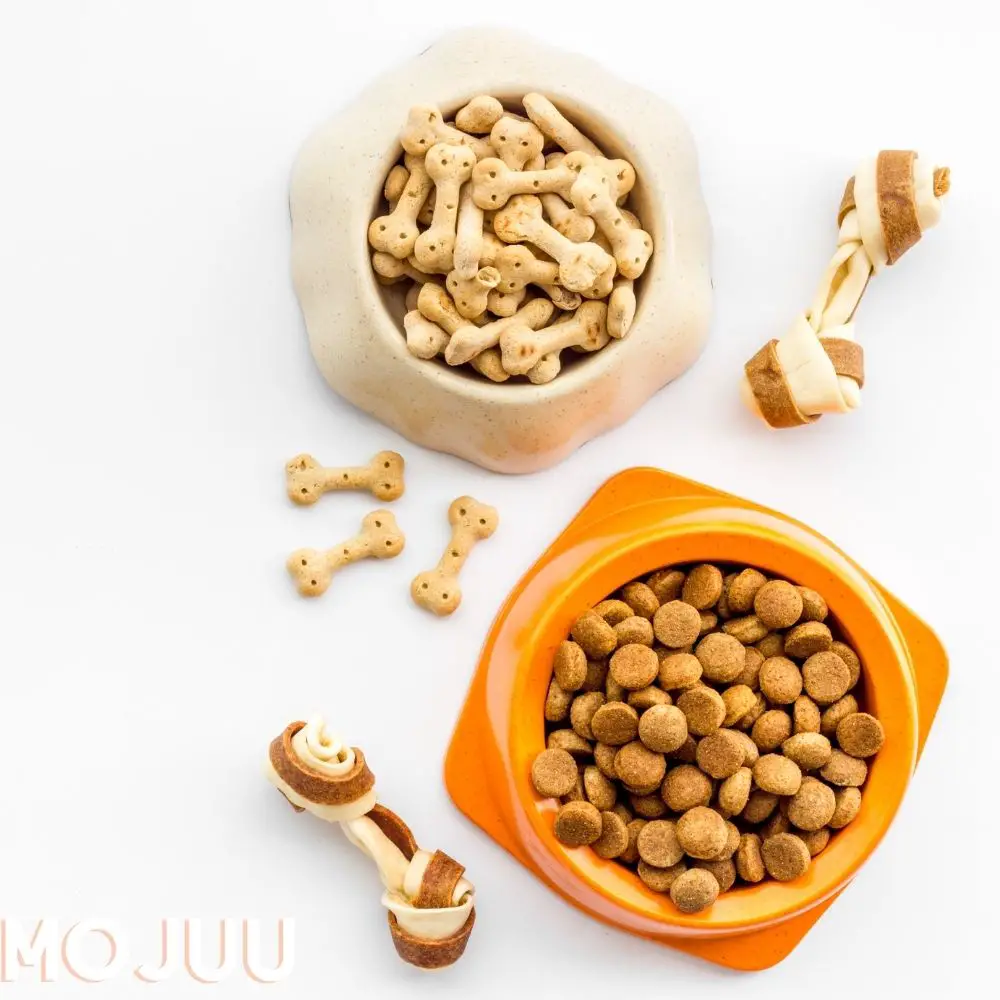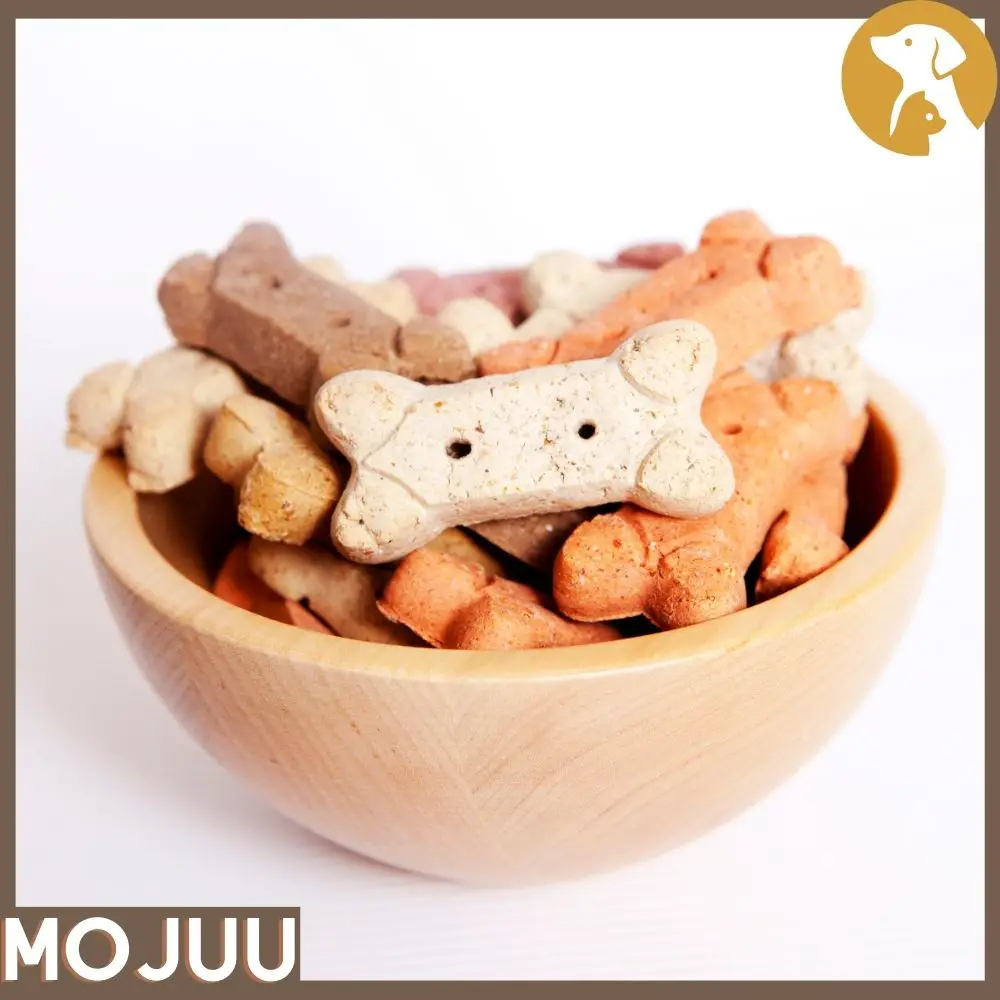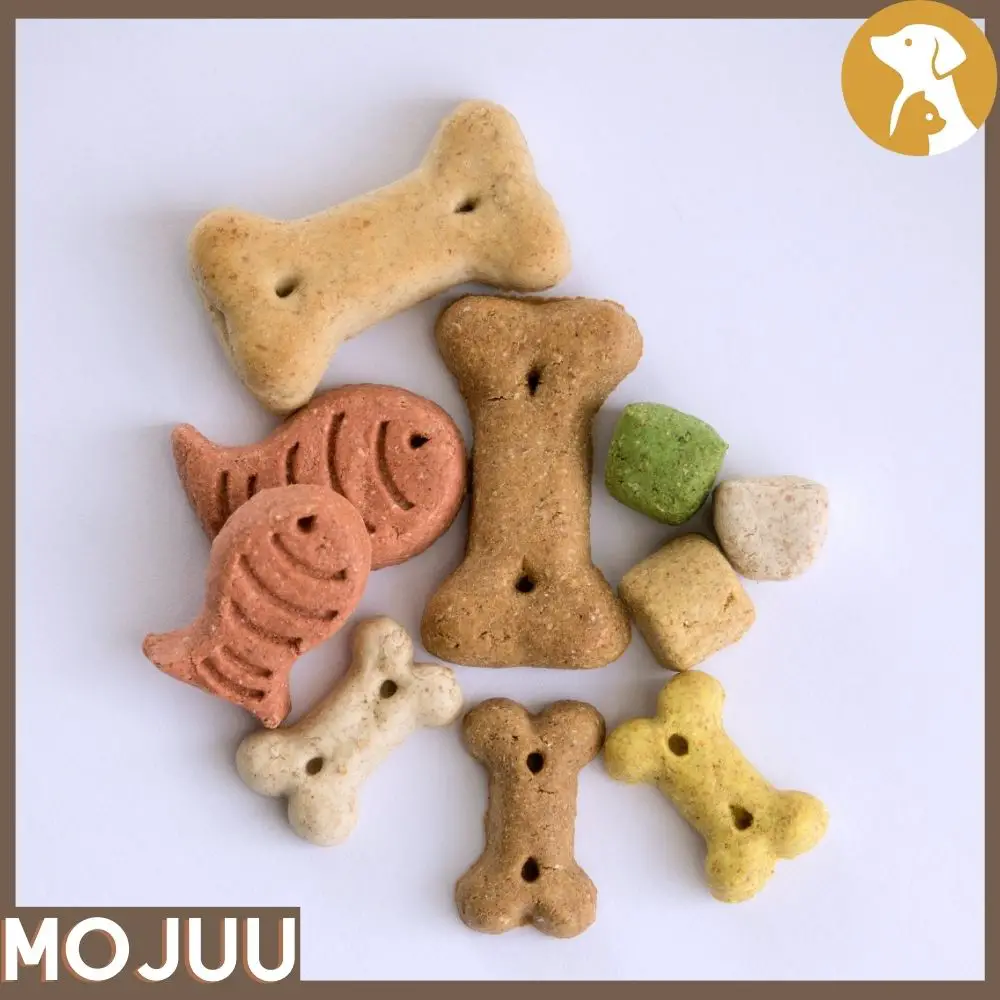In the heart of every pet owner lies a genuine desire to pamper and care for their furry companions. One delightful way to express this love is through the creation of homemade dog treats. The surge in popularity of crafting canine goodies at home isn’t just a passing trend; it’s a testament to the growing understanding of the impact a pet’s diet has on their overall well-being.
As we dive into the art of making homemade dog treats, we’ll explore not only the joy it brings to our pets but also the numerous benefits, from ensuring the use of wholesome ingredients to the satisfaction of tailoring treats to our dog’s specific needs. So, buckle up as we embark on a journey to discover the secrets of creating delectable and healthy treats that will leave your furry friend’s tail wagging with joy.
Choosing the Right Ingredients

When it comes to whipping up homemade delights for our canine companions, the first and foremost consideration is the selection of ingredients. Ensuring that the components are not only tasty but also safe for your furry friend is paramount.
1. Emphasize Dog-Friendly Ingredients:
- Dogs have unique dietary needs, and some human foods may be harmful to them. Choose ingredients specifically known to be safe for dogs.
- Opt for dog-friendly fruits like apples, blueberries, or bananas, and vegetables such as sweet potatoes or carrots.
2. Highlight Common Ingredients and Their Benefits:
- Delve into the benefits of using ingredients like oats, which provide a good source of fiber.
- Mention the significance of proteins from sources like lean meats or peanut butter, promoting muscle health.
As we move forward, understanding the importance of each ingredient ensures that our homemade treats aren’t just flavorful but also contribute to our dog’s overall well-being. Let’s explore some simple recipes suitable for even the most novice treat-makers.
Can I Use Regular Flour for Dog Treats?
The type of flour you choose for your homemade dog treats can significantly impact the treat’s texture and nutritional value. Let’s delve into whether regular flour is suitable for your furry friend or if there are better alternatives.
Discussion on the Type of Flour Suitable for Dogs*
Using regular all-purpose flour for dog treats is generally acceptable and safe for most dogs. However, it’s essential to be aware of potential sensitivities or allergies your dog may have. Some dogs may be intolerant to gluten, a protein found in wheat, which is a primary component of regular flour.
If your dog shows no signs of gluten sensitivity, you can confidently use all-purpose flour for your treats. It provides a familiar texture and is readily available in most kitchens.
Alternatives for Dogs with Gluten Sensitivities
For dogs with gluten sensitivities or allergies, consider these alternative flours:
- Whole Wheat Flour: A healthier option with more nutrients than regular all-purpose flour.
- Coconut Flour: Ideal for grain-free treats, and it adds a subtle coconut flavor.
- Chickpea Flour: High in protein and grain-free, suitable for dogs with allergies.
Experimenting with these alternative flours can cater to your dog’s specific dietary needs while still allowing you to create delicious homemade treats.
In the upcoming section, we’ll explore the benefits of homemade treats over store-bought ones and address the question: Are Homemade Treats Good for Dogs? Stay tuned for insights into why crafting treats at home can be a rewarding experience for both you and your furry companion.
Are Homemade Treats Good for Dogs?

As pet owners, the well-being of our furry friends is a top priority. One way to ensure their health and happiness is by opting for homemade treats over store-bought alternatives. Let’s explore the benefits and considerations of treating your canine companion to homemade delights.
Benefits of Homemade Treats Over Store-Bought
- Control Over Ingredients: Crafting treats at home allows you to have complete control over the ingredients. You can tailor recipes to suit your dog’s specific dietary needs, avoiding additives or preservatives commonly found in commercial treats.
- Nutritional Value: Homemade treats provide the opportunity to include wholesome, nutritious ingredients. You can incorporate proteins, fruits, and vegetables that contribute to your dog’s overall health, promoting a balanced diet.
- Avoiding Allergens: For dogs with allergies or sensitivities, homemade treats offer a safe alternative. By selecting ingredients carefully, you can create treats that align with your dog’s dietary restrictions, minimizing the risk of adverse reactions.
- Tailored to Preferences: Every dog has unique preferences. Homemade treats enable you to tailor flavors and textures to your dog’s liking, making each treat a delightful experience.
Considerations for Portion Control
While homemade treats have numerous benefits, it’s crucial to consider portion control. Treats, even if made with the healthiest ingredients, should be given in moderation. Overindulgence can lead to weight issues and nutritional imbalances.
Strike a balance by factoring in the treats’ calories within your dog’s overall daily intake. Consult with your veterinarian to determine the suitable quantity based on your dog’s size, breed, and activity level.
What Makes Good Dog Treats?

Creating dog treats that are not only tasty but also beneficial for your furry friend involves understanding the key components that contribute to their overall goodness. Let’s explore the elements that make a dog treat truly exceptional.
Balancing Nutritional Value and Taste
A good dog treat strikes a perfect balance between nutritional value and taste. Consider including ingredients that offer essential nutrients like proteins, healthy fats, and vitamins. This balance contributes to your dog’s overall well-being, ensuring that treats complement their regular diet.
Avoiding Harmful Additives
Steer clear of additives and preservatives commonly found in commercial dog treats. These can include artificial colors, flavors, and chemicals that may not align with your dog’s optimal health. By opting for homemade treats, you have the control to keep the ingredients pure and simple.
Tailoring Treats to Your Dog’s Needs
Every dog is unique, and their dietary needs and preferences can vary. A good dog treat considers your pet’s specific requirements. For example, if your dog has allergies or sensitivities, choose ingredients that are safe and enjoyable for them.
Texture and Size Matters
Dogs appreciate a variety of textures, whether it’s a crunchy biscuit or a chewy delight. Consider your dog’s preferences and dental health when selecting the texture of the treat. Additionally, keep the size appropriate, ensuring it’s manageable for your dog to enjoy without posing a choking hazard.
Homemade Love and Attention
The secret ingredient that elevates homemade treats is the love and attention you put into making them. Your dog can sense the care that goes into crafting each treat, making the experience more enjoyable and meaningful.
How Are Natural Dog Treats Made?
The term “natural” when applied to dog treats signifies a focus on wholesome ingredients and minimal processing. Let’s delve into how natural dog treats are made, exploring the definition of natural treats and popular ingredients that contribute to their creation.
Definition of Natural Treats
Natural dog treats prioritize simplicity in ingredients, avoiding artificial additives, colors, and preservatives. The emphasis is on using whole, minimally processed components to create treats that align with a dog’s natural diet.
Popular Natural Ingredients and Their Benefits
- Lean Meats: Natural treats often include lean meats such as chicken, turkey, or beef. These protein sources contribute to muscle health and provide essential amino acids.
- Whole Grains: Natural treats may include whole grains like oats or brown rice, offering fiber and nutrients. These grains contribute to a satisfying texture in the treats.
- Natural Fats: Healthy fats from sources like coconut oil or flaxseed oil are often included. These fats promote a glossy coat and support overall skin health.
- Limited Ingredients: Natural treats typically have a short ingredient list, making it easy for pet owners to identify and understand what goes into each treat.
By understanding the principles behind natural dog treats, you can make informed choices when selecting or preparing treats for your dog. In the upcoming section, we’ll tackle the question: Are oats safe for dogs? Join us as we explore the nutritional benefits of oats and how to safely incorporate them into dog treats.
Are Oats Safe for Dogs?

Oats, a common human breakfast staple, can also be a nutritious addition to your homemade dog treats. Let’s explore the nutritional benefits of oats and how to safely incorporate them into dog treats.
Overview of the Nutritional Benefits of Oats
Oats are a whole grain packed with essential nutrients beneficial for both humans and dogs. These benefits include:
- Dietary Fiber: Oats are rich in soluble fiber, promoting healthy digestion and aiding in the absorption of nutrients.
- Protein Content: Oats contain a moderate amount of protein, contributing to your dog’s muscle health.
- Vitamins and Minerals: Oats provide vitamins like B6 and minerals such as iron and magnesium, supporting overall well-being.
Safe Ways to Incorporate Oats into Dog Treats
When using oats in homemade dog treats, follow these tips to ensure they are safe and enjoyable for your canine companion:
- a. Choose Whole Oats or Oat Flour:Opt for whole oats or oat flour rather than instant oats, as they retain more nutritional value. Whole oats add a satisfying texture to treats.
- b. Avoid Added Sugars or Flavors:Select plain oats without added sugars or flavors. The goal is to keep the treats healthy and prevent potential digestive issues.
- c. Moderation is Key:While oats offer nutritional benefits, moderation is crucial. Introduce oats gradually to monitor your dog’s tolerance, especially if they have not consumed oats before.
- d. Incorporate with Other Dog-Friendly Ingredients:Combine oats with other dog-friendly ingredients, such as peanut butter or banana, to enhance flavor and nutritional variety.
By incorporating oats into your homemade dog treats responsibly, you can provide your furry friend with a tasty and nutritious snack. In the next section, we’ll delve into the main ingredients commonly found in dog treats, helping you understand the components that contribute to your dog’s delight. Join us as we explore the question: What Is the Main Ingredient in Dog Treats?
What Is the Main Ingredient in Dog Treats?
The main ingredient in dog treats serves as the foundation for flavor and nutritional value. Let’s explore the key components commonly found in dog treats, helping you understand the elements that contribute to your dog’s delight.
Identifying Key Components
The main ingredients in dog treats can vary based on the type of treat and your dog’s dietary needs. However, some key components often take center stage:
- a. Protein Source: The protein source is a crucial element, supporting your dog’s muscle health. Common protein sources include lean meats (chicken, beef, turkey), fish, or plant-based proteins like peanut butter.
- b. Flour or Grain: The choice of flour or grain influences the treat’s texture and nutritional content. Whole wheat flour, oats, or alternative flours like coconut or chickpea are commonly used.
- c. Fruits and Vegetables: Adding dog-friendly fruits (apples, blueberries, bananas) and vegetables (sweet potatoes, carrots) introduces natural sweetness and essential vitamins.
- d. Fats: Healthy fats from sources like oils (coconut oil, flaxseed oil) or fats naturally present in ingredients like peanut butter contribute to a shiny coat and overall well-being.
Customizing Treats Based on Dietary Needs
Understanding your dog’s dietary needs and preferences allows you to customize treats accordingly. If your dog has specific sensitivities or allergies, opt for alternative ingredients that align with their well-being.
In the upcoming section, we’ll explore a quick and easy dog treat recipe, demonstrating how these main ingredients come together to create a delightful homemade snack for your furry friend. Stay tuned for a simple yet tasty recipe you can try in just 5 minutes!
Quick and Easy Dog Treat Recipe

Now that we’ve explored the essential components of dog treats, let’s put our knowledge into action with a quick and easy recipe. In just 5 minutes, you can whip up a delightful homemade treat for your canine companion.
Ingredients
- 1 cup whole wheat flour (or alternative flour if needed)
- 1/2 cup natural peanut butter (unsalted, no added sugars)
- 1/4 cup pureed pumpkin (canned or homemade)
- 1 tablespoon coconut oil (melted)
- 1 egg
Instructions
- In a mixing bowl, combine the whole wheat flour, natural peanut butter, pureed pumpkin, melted coconut oil, and the egg. Mix well until a dough forms.
- If the dough is too sticky, you can add a bit more flour. If it’s too dry, a small amount of water can be added.
- Place the treats on the prepared baking sheet and bake for approximately 10-12 minutes or until they turn golden brown.
- Allow the treats to cool completely before offering them to your dog.
This simple recipe allows you to tailor the treats to your dog’s preferences, using high-quality ingredients. Feel free to get creative with shapes or add a sprinkle of oats on top for an extra touch.
In the next section, we’ll delve into the importance of personalizing dog treats for your pet. Join us as we explore how understanding your dog’s preferences can enhance the treat-making experience.
Step-by-Step Guide to Making Dog Treats
Now that we’ve gathered our ingredients, let’s embark on the exciting journey of crafting delicious homemade dog treats. Follow this step-by-step guide to ensure a paw-licking success.
Choosing the Right Recipe
Begin by selecting a dog treat recipe that aligns with your pet’s dietary needs and preferences. Whether your canine companion loves meaty delights or has a sweet tooth for fruity treats, there’s a wide array of recipes available. Consider any specific health considerations or allergies your dog may have.
Preparing the Ingredients
Gather all the ingredients according to the chosen recipe. Ensure that the proportions are correct and that any substitutions are made based on your dog’s dietary requirements. Chop fruits and vegetables into small, dog-friendly pieces, and have all the components ready for mixing.
Mixing and Shaping the Treats
Use a spatula or your hands to create a consistent dough-like texture. This step is where your dog’s favorite protein, fruits, and vegetables come together to form a tempting mixture.
Once mixed, it’s time to shape the treats. Consider using cookie cutters or rolling the dough into bite-sized balls. Get creative with shapes – perhaps a bone or paw print for that extra touch of canine charm.
Baking or Freezing Options
Depending on the recipe, you may have the option to either bake or freeze the treats. If baking, preheat the oven and place the treats on a parchment-lined baking sheet. Keep a watchful eye to prevent overcooking, ensuring a chewy or crunchy texture, depending on your dog’s preference.
Alternatively, freezing treats can provide a refreshing option, especially during hot weather. Simply place the shaped treats on a tray in the freezer until firm. This step-by-step guide ensures that your homemade dog treats are not only delicious but also tailored to your dog’s taste and dietary needs.
In the next section, we’ll address a common query: Can I Use Regular Flour for Dog Treats? Let’s explore the flour options suitable for our canine companions.
Ingredients for Homemade Dog Treats

When it comes to preparing homemade dog treats, selecting the right ingredients is crucial for both taste and nutritional value. Let’s delve into the essential components and explore alternatives to cater to various dietary needs.
Overview of Essential Ingredients
Before you embark on your homemade dog treat adventure, gather these fundamental ingredients:
- Flour: Choose whole wheat flour or alternative flours like coconut or chickpea for added nutrients.
- Protein: Include a protein source such as lean meat, peanut butter, or eggs to support your dog’s muscle health.
- Fruits and Vegetables: Incorporate dog-friendly fruits like apples or blueberries, and vegetables like sweet potatoes for added vitamins.
- Liquid: Use water or low-sodium broth to bind the ingredients together.
- Fats: Opt for healthy fats like olive oil or flaxseed oil to promote a shiny coat and overall well-being.
Common Alternatives for Specific Dietary Needs
If your dog has specific dietary requirements or sensitivities, consider these alternatives:
- Grain-Free Options: For dogs with grain sensitivities, try almond flour, coconut flour, or oats as grain-free alternatives.
- Protein Alternatives: Experiment with alternative protein sources like salmon, turkey, or tofu for dogs with meat sensitivities.
- Allergen-Free Choices: Steer clear of common allergens like dairy or gluten, substituting ingredients accordingly.
By tailoring the ingredients to your dog’s preferences and health needs, you can create treats that are both delicious and suitable for their well-being. In the next section, we’ll explore the step-by-step process of turning these ingredients into delightful homemade treats for your furry friend.
Conclusion
In conclusion, making homemade dog treats is a fulfilling and enjoyable activity that benefits both you and your furry friend. By understanding the key ingredients, the process of treat-making, and personalizing them to your dog’s preferences, you provide a wholesome and nutritious snack. The benefits of homemade treats, including control over ingredients, nutritional value, and the joy of bonding with your pet, make it a rewarding experience for any pet owner.
Remember, moderation is key when treating your dog, and consulting with your veterinarian can guide you in creating treats that align with your dog’s specific health needs. Embrace the creativity of treat-making, and enjoy the smiles and tail wags that follow.
FAQs (Frequently Asked Questions)
- Are homemade dog treats better than store-bought ones?
- Yes, homemade treats often have the advantage of using fresh, quality ingredients without additives or preservatives, allowing for better control over your dog’s diet.
- Can I use regular flour for dog treats?
- Yes, you can use regular flour for dog treats unless your dog has specific sensitivities. Alternatively, consider using whole wheat flour, coconut flour, or chickpea flour for added nutritional benefits.
- What is the main ingredient in dog treats?
- The main ingredient varies, but common components include a protein source (meat or plant-based), flour or grain, fruits, vegetables, and healthy fats.
- How can I personalize dog treats for my pet?
- Pay attention to your dog’s flavor preferences and experiment with ingredients like bacon, fruits, or different shapes. Personalizing treats enhances the overall experience for your pet.
- Are oats safe for dogs?
- Yes, oats are safe for dogs and offer nutritional benefits. Use whole oats or oat flour in moderation and avoid added sugars or flavors.
As you embark on the journey of making homemade dog treats, enjoy the process and cherish the moments shared with your loyal companion. Happy treat-making!







